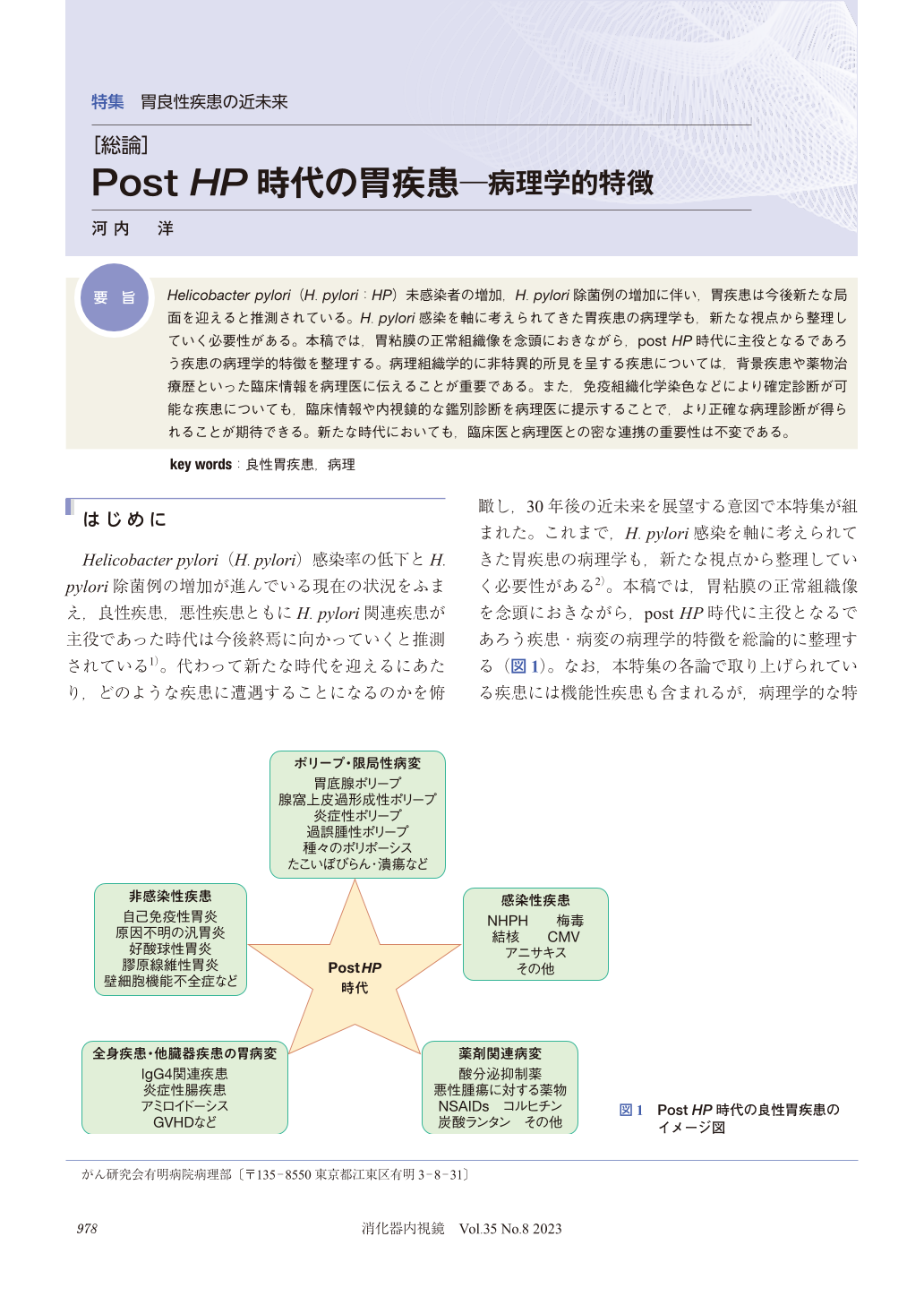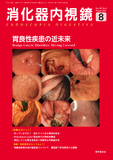Japanese
English
- 有料閲覧
- Abstract 文献概要
- 1ページ目 Look Inside
- 参考文献 Reference
- サイト内被引用 Cited by
要旨
Helicobacter pylori(H. pylori:HP)未感染者の増加,H. pylori除菌例の増加に伴い,胃疾患は今後新たな局面を迎えると推測されている。H. pylori感染を軸に考えられてきた胃疾患の病理学も,新たな視点から整理していく必要性がある。本稿では,胃粘膜の正常組織像を念頭におきながら,post HP時代に主役となるであろう疾患の病理学的特徴を整理する。病理組織学的に非特異的所見を呈する疾患については,背景疾患や薬物治療歴といった臨床情報を病理医に伝えることが重要である。また,免疫組織化学染色などにより確定診断が可能な疾患についても,臨床情報や内視鏡的な鑑別診断を病理医に提示することで,より正確な病理診断が得られることが期待できる。新たな時代においても,臨床医と病理医との密な連携の重要性は不変である。
The number of Helicobacter pylori (H. pylori) -naïve individuals patients and HP-eradicated cases are increasing, and gastric diseases are expected to enter a new phase. In this article, the author reviews the pathological features of the conditions that will play a leading role in the post-HP era while considering the normal histopathology of the gastric mucosa. It is important to provide the pathologist with clinical information, such as background disease and drug treatment history for diseases with nonspecific histopathological findings. In addition, for conditions for which a definitive diagnosis can be made by immunohistochemical staining, etc., more accurate pathological diagnosis can be obtained by presenting clinical information and endoscopic differential diagnosis to the pathologist. In this new era, the importance of close collaboration between clinicians and pathologists will remain unchanged.

© tokyo-igakusha.co.jp. All right reserved.


